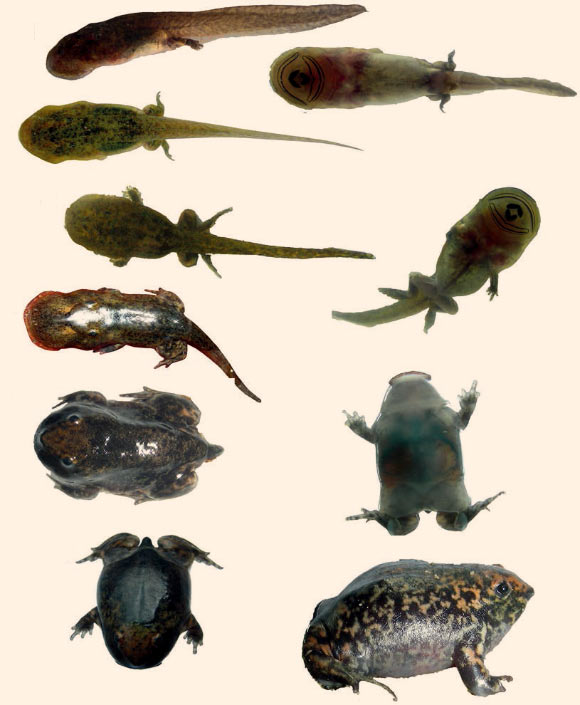Herpetologists are claiming they have discovered a new species of purple frog living in the Western Ghats, India.
In a paper published in the Alytes, the International Journal of Batrachology, the researchers describe the new frog species that they call Nasikabatrachus bhupathi.
The proposed English name is the Bhupathy’s purple frog.
The new species was described by Dr. S. Jegath Janani from the Centre for Cellular and Molecular Biology (CSIR-CCMB) in Hyderabad, India, and his colleagues from the American Museum of Natural History the CSIR-CCMB, and the Nature Environment and Wildlife Society.
“The name of this species, bhupathi, commemorates Dr. S. Bhupathy, a noted scientist and a field herpetologist,” the authors explain.
They say Nasikabatrachus bhupathi is just the second member of the genus Nasikabatrachus.
The frog is morphologically, acoustically and genetically distinct from the only previously known species, Nasikabatrachus sahyadrensis (common names: purple frog, Indian purple frog, pignose frog).

External morphology of tadpoles of the Bhupathy’s purple frog (Nasikabatrachus bhupathi). Image credit: S. Jegath Janani et al.
Nasikabatrachus bhupathi measures between 1.8 and 2 inches (4.5-5 cm) in length.
“The abdominal skin of the species is smooth, grayish-white with faint marbling in coloration. The skin on dorsum is smooth, thick, and dark brown from vent to shoulder. The head is lighter brown; no dorso-lateral or transverse skin folds,” Dr. Janani and co-authors say.
“The body is globular; the head is not externally distinct from body, the snout is acutely pointed with a lighter colored fleshy protuberance and a hard knob-like projection at the tip.”
“The mouth is small, subterminal, ventral, and posterior to snout tip; the tongue is small with entire rounded tip.”
According to the team, Nasikabatrachus bhupathi lives on the eastern slopes of the Western Ghats.
“The currently known distribution of Nasikabatrachus bhupathi is restricted to three highly seasonal second order streams,” they say.
“The type locality is on the leeward side of the Western Ghats, which receives less rainfall than the western slopes of these mountains during southwest monsoon.”
Both Nasikabatrachus bhupathi and N. sahyadrensis are highly adapted for fossoriality (burrowing).
“Nasikabatrachus frogs live and feed underground, therefore hard, dry soil and rock (from mountain uplift) is expected to present an insurmountable barrier to burrowing and feeding, preventing them from dispersing far,” the researchers say.
_____
S. Jegath Janani et al. 2017. A new species of the genus Nasikabatrachus (Anura, Nasikabatrachidae) from the eastern slopes of the Western Ghats, India. Alytes 34 (1-4): 1-19








